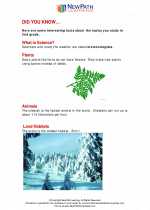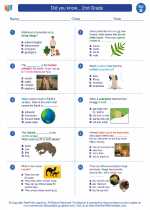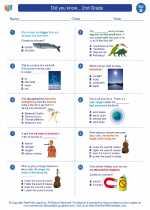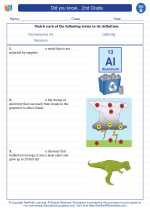Plate Tectonics
Plate tectonics is the scientific theory that explains the movement of the Earth's lithosphere, which is the outermost layer of the Earth. The lithosphere is divided into several large and small pieces called tectonic plates, which float on the semi-fluid asthenosphere underneath. These plates constantly move and interact with each other, leading to various geological phenomena such as earthquakes, volcanic eruptions, and the formation of mountain ranges.
Key Concepts to Understand:
- Tectonic Plates: The Earth's lithosphere is divided into several tectonic plates, including the North American Plate, Pacific Plate, Eurasian Plate, and others. These plates are constantly moving either towards, away from, or alongside each other.
- Plate Boundaries: The areas where tectonic plates meet are known as plate boundaries. There are three main types of plate boundaries: divergent boundaries (where plates move away from each other), convergent boundaries (where plates move towards each other), and transform boundaries (where plates slide past each other).
- Geological Features: The movement of tectonic plates leads to the formation of various geological features, such as mountains, ocean trenches, and volcanic arcs.
- Earthquakes and Volcanoes: Plate tectonics play a significant role in the occurrence of earthquakes and volcanic eruptions. Most earthquakes and volcanic activities are concentrated along the plate boundaries.
Study Guide:
Here are some key points to focus on while studying plate tectonics:
- Identify and label the major tectonic plates on a world map.
- Describe the three types of plate boundaries and provide examples of each.
- Explain how the movement of tectonic plates contributes to the formation of different landforms.
- Discuss the relationship between plate tectonics, earthquakes, and volcanic activity.
- Explore the historical development of the theory of plate tectonics and the key scientists involved.
Understanding plate tectonics is essential for comprehending the dynamic processes that shape the Earth's surface and the distribution of geological hazards. By mastering this topic, you'll gain insights into the interconnectedness of Earth's systems and the forces that drive natural phenomena.
[Plate Tectonics] Related Worksheets and Study Guides:
.◂Science Worksheets and Study Guides Second Grade. Did you know... 2nd Grade

 Worksheet/Answer key
Worksheet/Answer key
 Worksheet/Answer key
Worksheet/Answer key
 Worksheet/Answer key
Worksheet/Answer key
 Vocabulary/Answer key
Vocabulary/Answer key
